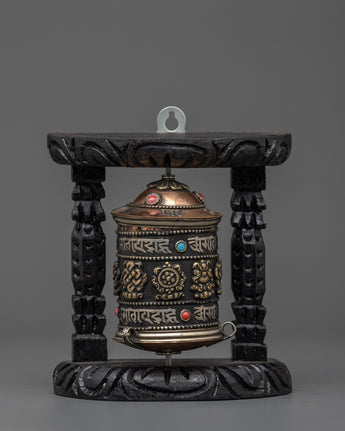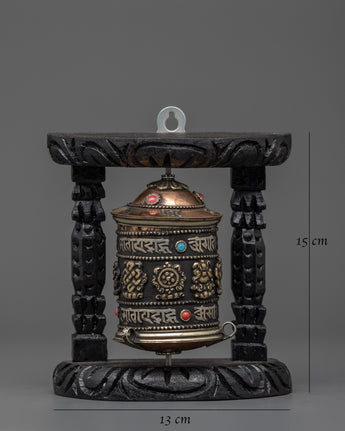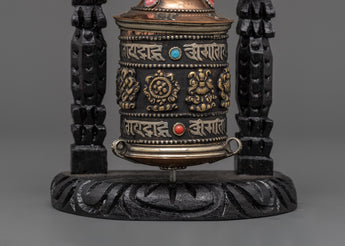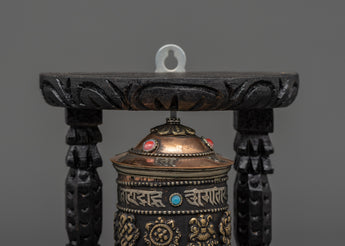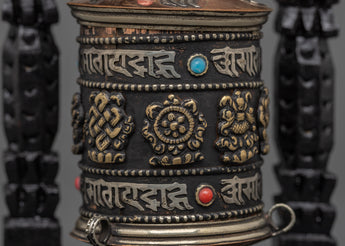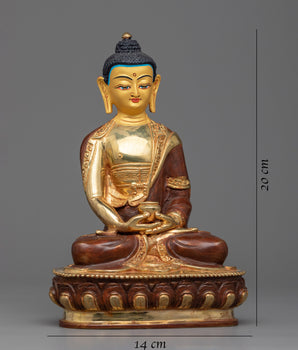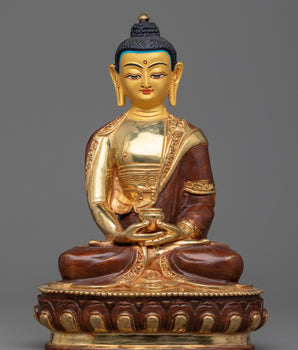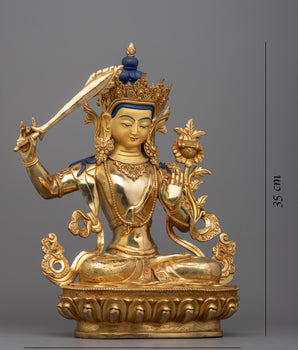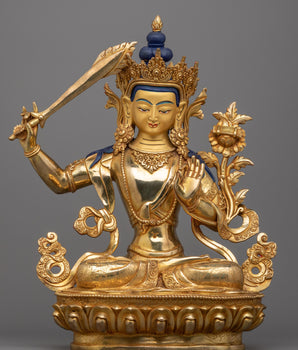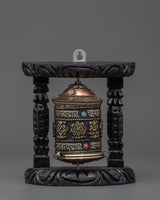

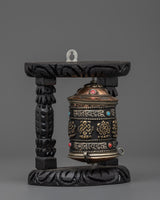
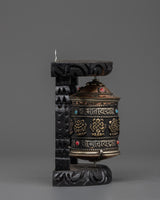
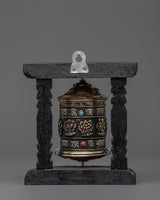
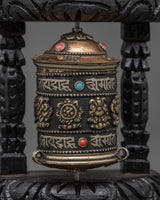

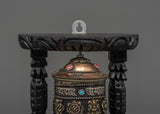
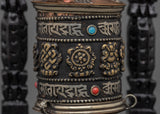
Tibetan Prayer Wheel with Brass | Buddhist Meditation Decor

100% AUTHENTIC

HANDMADE

FREE SHIPPING
Tibetan Prayer Wheel with Brass - Rituals & Sacred Spaces
--------------------------------------------------------
Size: 15cm (Height) x 13cm (Width)
Weight: 0.24kg
Materials: Copper Body, Brass Body, White Metal, Wood
--------------------------------------------------------
About our Prayer Wheel
This Tibetan Prayer Wheel, elegantly designed from brass, copper, white metal, and wood, will add focus, tranquility, and sacred energy to your spiritual environment. At 15cm tall and 13cm broad, it is compact and exquisite, featuring specific mantra inscriptions and auspicious symbols inlaid with turquoise and coral stones, which enhance its ritual power and decorative significance.
This prayer wheel is mounted in a hand-carved wooden frame, making it an ideal addition to tabletop altars or a wall-hanging devotional piece. The spinning process is smooth, with mantras that radiate blessings and compassion with each turn. It's perfect for both home shrines and personal meditation spaces, as it's lightweight yet spiritually significant.
Introduction to Prayer Wheel
A prayer wheel is a cylindrical device on a spindle, used in Tibetan Buddhism. It is typically inscribed with the mantra "Om Mani Padme Hum" and rotated by hand as a form of spiritual practice and to accumulate merit. Spinning the wheel is believed to have the same spiritual benefits as verbally reciting the mantra. The use of prayer wheels is widespread in Tibetan Buddhism and has spread to other cultures.
How does the Buddhist Prayer Wheel benefit us?
The benefits associated with rotating the wheel are numerous. It promotes knowledge, compassion, and bodhicitta in the practitioner and improves siddhis (spiritual powers such as clairvoyance, precognition, etc.). The practitioner can repeat the mantra as often as possible while the wheel is rolling, maintaining a calm, meditative attitude. A Tibetan Buddhist tradition holds that after a practice session, one should dedicate any acquired merits to the benefit of all sentient beings. Then three times Om Ah Hum. This is usually among Tibetans after finishing any Buddhist practice, including the prayer wheel exercise.
How do you set up your own Buddhist Shrine?
• Find a clean, quiet, and uncluttered spot
• Set up an altar table and cover it with an altar cloth that calls to you
• Place your sacred item at the center


